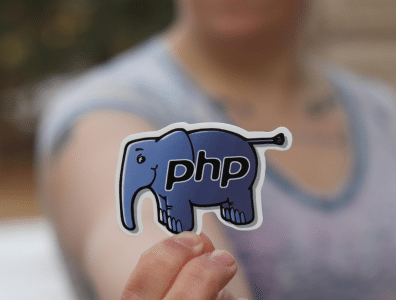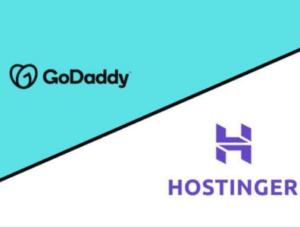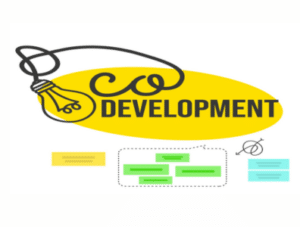Table of Contents
The term “codeslide” can refer to two different things in the context of a codeslide PHP script:

- Power of Codeslide PHP Script for Dynamic and Engaging Presentations: This refers to a specific, paid script that allows users to create interactive presentations with features like code highlighting, animation, and audience interaction. It costs money to use and is not available for free.
- Generic “codeslide” functionality: This term could be used more broadly to describe any PHP script that helps create presentations with code elements, possibly including features like syntax highlighting and code execution. It is crucial to remember that this is a pretty general term that does not always relate to a particular script or feature.
Here’s what I can offer based on your query:
- Alternatives for creating interactive presentations with PHP: If you’re looking for open-source options to create interactive presentations with PHP, you might need to explore alternative libraries or frameworks that offer presentation-building functionalities. Some options might include using libraries like “PHP Presentations” or frameworks like “Laravel Spark” (though the latter requires broader development knowledge).
It’s important to remember that creating fully interactive presentations with features like code execution typically requires more advanced development skills and knowledge of specific libraries or frameworks.
Due to the limitations of my access and the commercial nature of “Power of Codeslide PHP Script,” I cannot share its specific code or functionalities. However, I can offer more information on alternative approaches for creating interactive presentations with PHP:

1. Open-source libraries:
- PHP Presentations: This library provides tools for creating presentations with various slide types, text formatting, and image embedding. It doesn’t offer functionalities like code execution but allows basic interactivity through hyperlinks and animations. https://github.com/php/web-pres2
- Deck.js: This JavaScript library can be integrated with PHP to create more interactive presentations with features like transitions, animations, and custom layouts. While not purely PHP-based, it allows leveraging PHP for data fetching and presentation logic: https://deck.gl/docs/get-started/using-standalone
2. Frameworks:
- Laravel Spark: This commercial Laravel extension offers various features for building web applications, including basic presentation functionalities like creating slides, adding content, and customizing styling. However, it requires broader knowledge of Laravel development and might not be suitable if you solely need presentation creation. https://spark.laravel.com/
3. Online Tools:
- Slides.com: This online platform allows for creating presentations with various features, including code highlighting and embedding. While not strictly a “PHP script” solution, it offers a user-friendly alternative for creating interactive presentations without coding: https://slides.com/
Choosing the right approach depends on your specific needs and technical expertise.
- For basic presentations without code execution, PHP presentations or online tools like Slides.com might be sufficient.
- For more complex presentations with specific interactivity requirements: consider exploring Deck.js or a combination of PHP with other libraries and frameworks, depending on your comfort level with coding.
Advanced Techniques:
- PHP Code Execution Libraries: Libraries like “PHPy” or “Box” enable embedding and executing PHP code within presentations, allowing dynamic content generation and interaction. However, these libraries require careful security considerations and are not recommended for beginners due to potential security risks.
- WebSocket Integration: Implementing WebSockets in your PHP application allows real-time communication between the server and the presentation, enabling features like live updates, collaboration, and user input. This approach requires a strong understanding of web development and socket programming.
Security Considerations:
When working with user-generated content or code execution, security is paramount. Here are some crucial aspects to consider:
- Sanitize user input: Thoroughly sanitize any user input before processing or execution to prevent injection attacks like XSS (cross-site scripting).
- Restrict code execution: Limit the execution environment and available functions to prevent unauthorized access or malicious code execution.
- Implement user permissions: Control user access to code execution based on their roles and privileges.

Additional Resources:
- PHP Manual: Security: https://www.php.net/manual/en/security.php
- OWASP Top 10 Web Application Security Risks: https://owasp.org/www-project-top-ten/
It’s important to emphasize that these advanced techniques are not recommended for beginners due to their complexity and potential security risks.
If you’re new to web development, I strongly advise:
- Start with simpler options, like online presentation tools or basic PHP libraries.
- Focus on learning the fundamentals of PHP and web development.
- Gradually progress to more advanced techniques as your knowledge and experience grow.
Remember, security is critical when handling user input and code execution. If you’re unsure about implementing secure practices, consult with a qualified developer to ensure your presentations remain safe and reliable.
Exploring Open-Source Libraries and Frameworks:
- Deck.js Integration with PHP: If you’re comfortable with JavaScript, consider integrating Deck.js with a basic PHP backend. This approach allows:
- Creating interactive presentations with Deck.js: Utilize its features like transitions, animations, and custom layouts.
- Leveraging PHP for data fetching and presentation logic: Use PHP to fetch data from databases or APIs and dynamically generate content for your slides.
- Frameworks with Presentation Features: Several Laravel packages offer basic presentation functionalities:
- Laravel Telescope: While not specifically for presentations, it allows creating custom dashboards with charts and graphs, potentially adaptable for interactive presentations. https://github.com/laravel/telescope
- Laravel Snappy: This package facilitates PDF generation from HTML, potentially useful for exporting presentations as static documents. https://github.com/barryvdh/laravel-snappy
Exploring Online Tools and Code Examples:
- GitHub Search: Search for “PHP presentation” on GitHub to discover open-source projects that might provide inspiration or basic code examples for building interactive presentations with PHP. Remember to carefully evaluate the security and quality of any code you find before using it.
- Stack Overflow: Search for questions related to “PHP interactive presentations” or “Deck.js with PHP” on Stack Overflow. You might find valuable discussions, solutions, and code snippets that can guide you in the right direction.
Remember:
- Start simple and gradually progress. If you’re new to web development, begin with basic approaches like online tools or simple PHP libraries. Gradually move towards more advanced techniques as your skills and knowledge improve.
- Prioritize learning and security: Focus on learning the fundamentals of PHP and web development before venturing into advanced topics like code execution. Always prioritize security by thoroughly sanitizing user input and implementing appropriate security measures when handling sensitive data.



